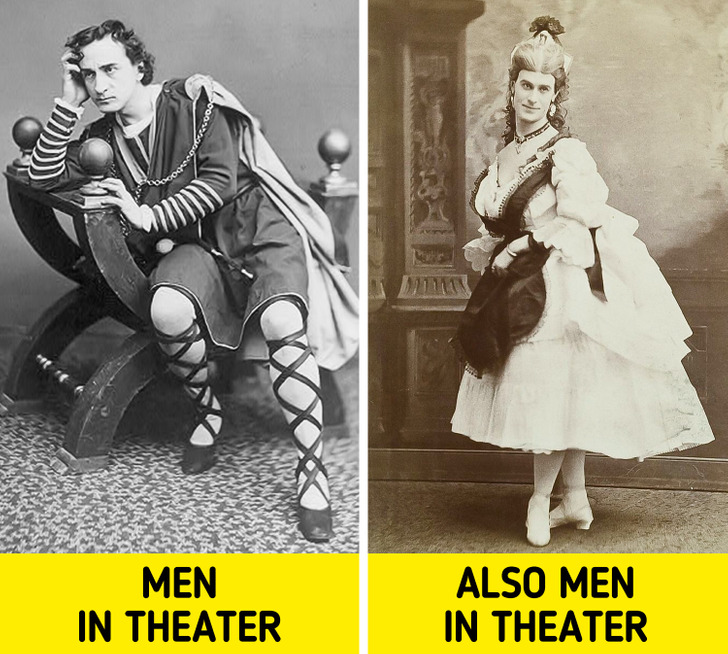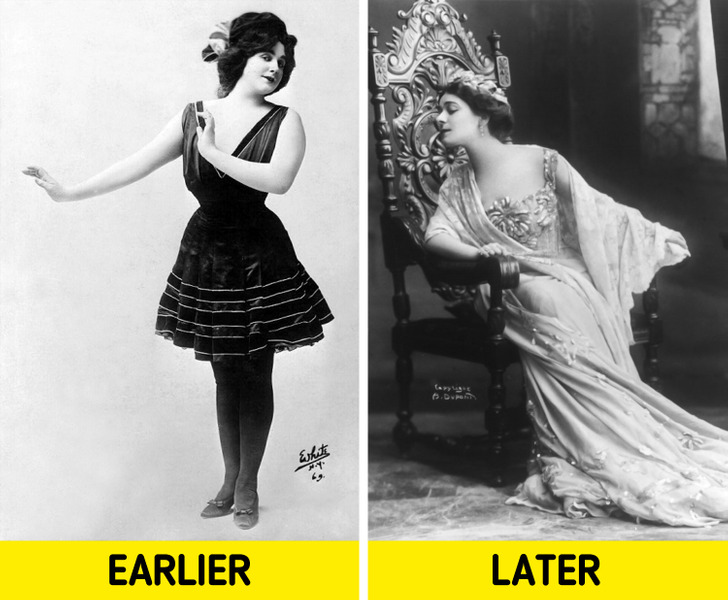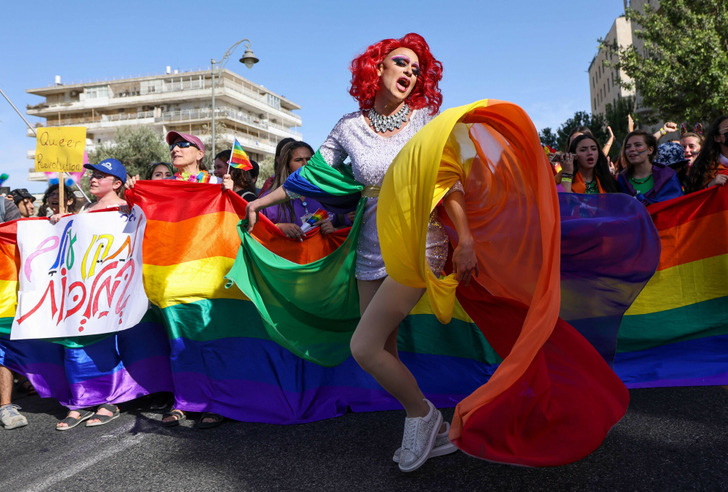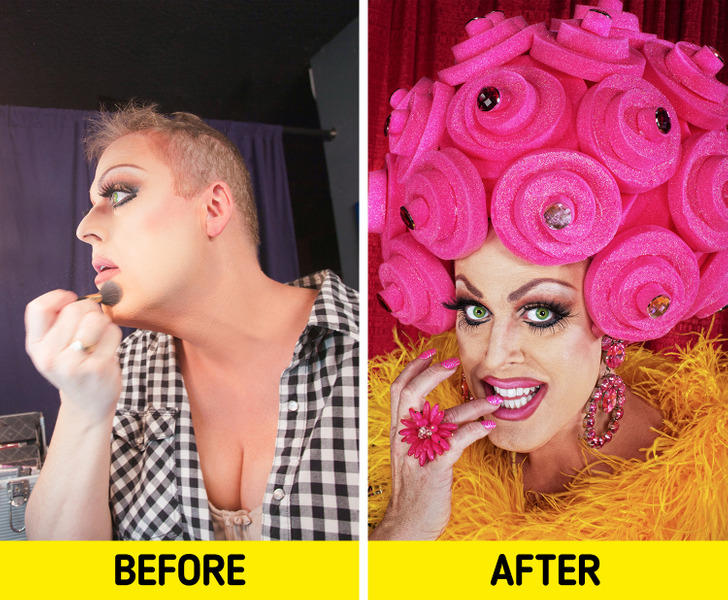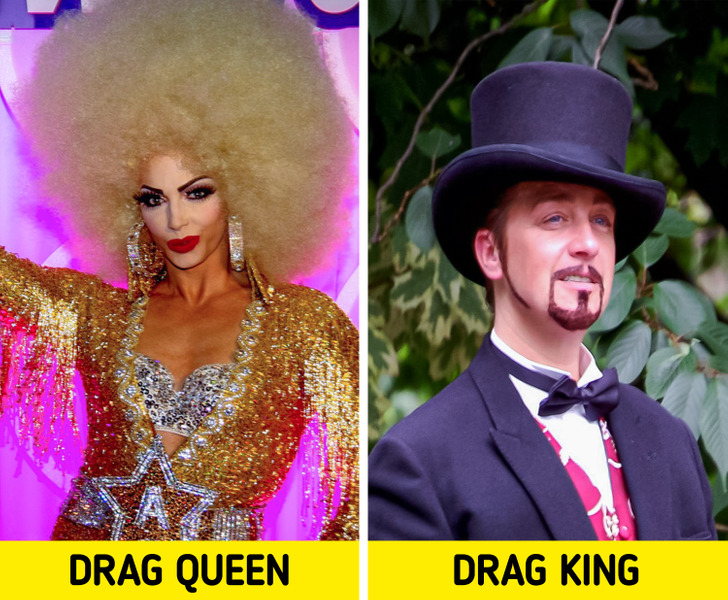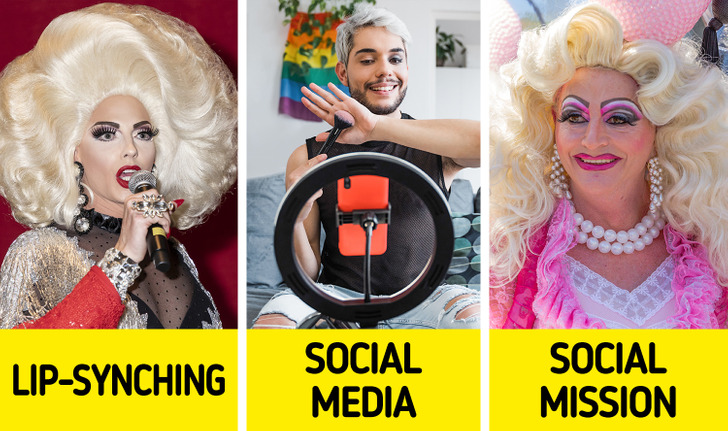Who Drag Queens Are and What Does It Mean to Be One
Bright make-up, high heels, shiny dresses, and lush styling — it’s not just women that enjoy this. Men dress up in women’s clothing and go on stage to feel like queens, or rather, Drag Queens.
5-Minute Crafts will tell you about who Drag Queens are and how they became part of pop culture.
What drag means
Drag is an art form in which a person transforms into a bright provocative image with the help of clothing and makeup. The depiction is intended to exaggerate a particular gender identity, usually the opposite sex. The origin of the term drag is shrouded in mystery. However, there are several versions:
- The term “drag” originated in the UK. This definition was used as a form of English theatrical slang in the late 1800s. Despite the fact that women were given the right to play in the theater as early as 1661, men continued to play female roles. They wore long skirts on stage to perform as women. The skirts dragged across the floor, which is why actors called dressing up as women “putting on their drags.”
- There is also an opinion that the term is an acronym for the expression: “Dressed Resembling A Girl.”
The history of drag
The history of Drag Queens is deeply rooted. It goes back to the history of the theater, when men played female roles since women were not allowed to perform on stage. Drag artists have existed since ancient Greece and during the time of Shakespeare.
Female impersonation began to take on a more individualized form during the heyday of vaudeville in the United States in the early 20th century. Vaudeville shows were a series of unrelated variety acts like comedy, singing, dancing, juggling, acrobatics, illusion, ventriloquism, and puppet theater performed solo or in groups.
At the same time, drag became part of the LGBTQ+ community. Drag Queens began performing in bars and venues reserved specifically for LGBTQ+ people. They have become an important aspect of the nightlife in San Francisco, Los Angeles, and New York. In the early 1990s LGBTQ+ culture and LGBTQ+ pride gained widespread support, and with it came popular drag culture.
In the 21st century, drag culture has become a pop culture phenomenon. Today, drag is used not only for the entertainment of the public, but also for gender expression and the celebration of LGBTQ+ pride.
For most of history, drag was practiced primarily by men. But over time, cisgender, trans women, and non-binary people began to do it too. Most often, Drag Queens are gay, but not necessarily, as some drag artists are straight.
The art of drag
The transformation into the image of a Drag Queen can take several hours. A drag performer may aim for a particular style, celebrity impression, or message with their appearance. Hair, makeup, and costumes are the most important things for a Drag Queen.
Some people use drag as a means of self-expression. They have regular jobs, but dressing up is a hobby for them. Others do it for money, participating in various shows.
Men and women in drag
It is generally accepted that only men can be performers in drag shows. However, this misconception is contrary to the golden rule — there are no rules in drag. Drag show artists can be both men and women. The most important thing is talent and memorability.
Artists who transform into a female image call themselves Drag Queens. Although the majority of Drag Queens are male, some of them are transgender women. Drag Queen women are called “AFAB Queens,” which means “assigned female at birth.”
It is important to understand that men who do drag do not aspire to be women. In fact, most of these performers just want to be themselves, show off their skills, and perform their act.
“I do not impersonate females! How many women do you know who wear 7-inch heels, 4-foot wigs, and skintight dresses? — I don’t dress like a woman — I dress like a drag queen.” — RuPaul
What do Drag Queens do
A typical drag show includes dancing, singing, lip-synching, and pantomime featuring individual performers or groups of performers in extravagant costumes. They range from amateur performances in small bars to artfully staged theatrical performances. Artists can imitate different celebrities or create their own unique image and stage persona.
Today, most drag artists use social media to showcase their talent and abilities. Whether it’s costume design, make-up talent, or creative skills.
In addition to performing brilliantly, Drag Queens have an important social mission — they inspire others to be unique individuals. By breaking gender norms and accepting themselves, Drag Queens send a powerful message that everyone should value their individuality.
